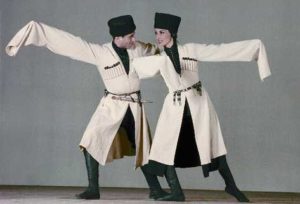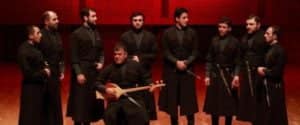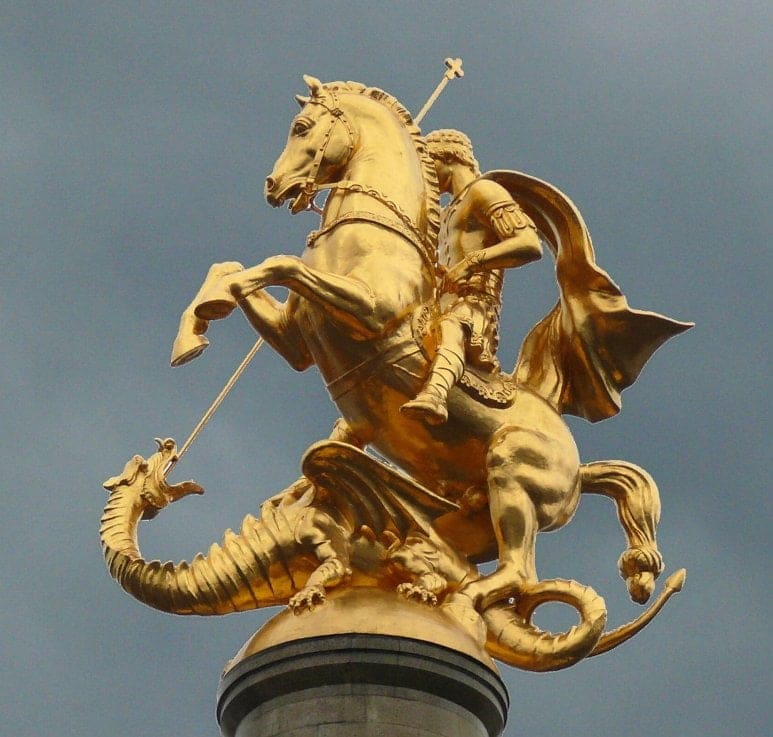Georgian folklore : Myths and Legends
Features of Georgian Folklore :
Georgian tales, music, dances, costume, a lot of myths and legends are connected with Georgia, Among the best-known are the following that we can take a look on our article.
The land of God:
- At the beginning of time when god was giving out lands to various nations the Georgians were too late because of their traditional feast. At the moment of their arrival no land was left for them. God was very furious and asked the Georgians to what they had drunk. The answer was: “To you, oh Lord, to us, to peace.” God liked the answer so much that he gave the small plot he had been keeping for himself. According to God the land was incomparable in its beauty and all people would admire it forever.
Prometheus:
- According to the Greek legend, Prometheus was punished by Zeus for giving fire to mankind. He was chained to its cliffs and a raven sent to peck at his liver. This story has its parallel with the Georgian legend of Amirani: Amirani, like Prometheus, defies God and introduces the use of metal to the mankind. He was chained on Caucasus with his dog. According to the legend an eagle pecks his liver in the day, but it heals itself every night
Jason and the Argonauts:
- Colchis is the first state mentioned as situated in Georgia. It was an ancient kingdom on the black sea. The myth about Jason and the Argonauts is firmly connected with the history of the Colchis kingdom. Argonauts were a band of heroes who accompanied Jason, an ancient Greek mythological hero, in his quest to find the Golden Fleece. It was the kingdom of Colchis where the Golden Fleece was kept. Strabo, an ancient Greek philosopher mentions the rivers of Colchis bearing gold and also the technique how the gold was extracted from rivers with the aid of shaggy sheepskins. When Jason arrived in Colchis he had to face a series of challenges meted out by King Aeetes, but Medea, Aeetes’ daughter helped him to overcome these obstacles and get the Golden Fleece. She married Jason and sailed away with him.
The robe of our Lord:
- According to the legend when Christ died on the cross in Jerusalem, two Georgian Jews Longinoz Karsneli and Elioz Mtskheteli witnessed the crucifixion. When they returned back, brought the tunic of Jesus with them. The sister of Elioz, Sidonia, pressed it to her heart and expired on the spot. The robe of Christ is said to be buried on the territory of Svetitskhoveli cathedral.
Georgian tales:
- Georgian folklore and especially folk tales are rich in beast, heroes, spirits and magicians. They are preserved in popular customs and superstitions. From the numerous characters in Georgian tales some of them are the most favorite: mzetunakhavi(the most beautiful woman in the world), devi (a beast often portrayed as multi-headed and human-eating), Natsarkekia ( a person who cannot do anything worthwhile) etc.
Music and dances:
- Georgia is among a few countries in the world to have highly developed choral culture. There are a lot of disputes related to origination of Georgian folklore. Opinions differ greatly. For example, some people believe that Georgian folk music is more that 1,500 years old. Others believe that Georgian singing and dancing folklore is dated back to B.C. One of the most important information about Georgians and their folklore is kept in Greek historian Xenophon’s work. He mentions that Georgian tribes used secular music, military and dancing melodies. It is also known that Georgians went to war singing and dancing.
- Each region in Georgia has its special manner of dancing and singing: Kakhetian, Kartlian,Imeretian, Adjarian, Megrelian, svanetian, Mtiulian etc. It’s sometimes called as “dancing dialect”. Due to these numerous varieties Georgian singing and dancing culture is rich in genres. While dancing women move gracefully in short steps and men express eagerness of fighting and their back is always stable and motionless.
Costume:
- Georgian people have a traditional dress called Chokha. The chokha emphasizes “I am a Georgian and I love my country.” It is a spiritual costume for all the Georgians. Chokha was widely used in 9-20th centuries in Georgia and it has now come to represent a Georgia reborn after Soviet Union regime. There are four main types of Chokha: Kartl-Kakheti chokha, Kevsur chokha, Adjarian chokha and General Caucasian chokha. Each of them has its own characteristics. For example, the front side of Khevsur Chokha has rich decorations and cuts on the sides; Kartl-kakheti chokha is longer than the Khevsur chokha and has triangle-like shapes on the chest. General Caucasian Chokha shares similarities mainly with Kartl-Kakheti Chokha with other additional patterns.
Booking and reservation of our tours :
Also, you can just book with us to start of your tour and we will direct you to the right hotel and car for your trip.
For example about the service we can provide you with : Cars – Guides – Day tour guide – Walking and adventure trips…etc.
More information and to see about our tours, you can click here.





